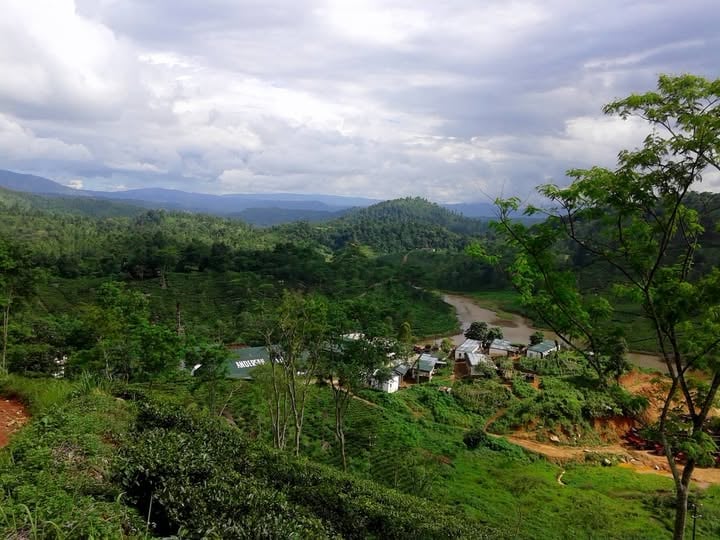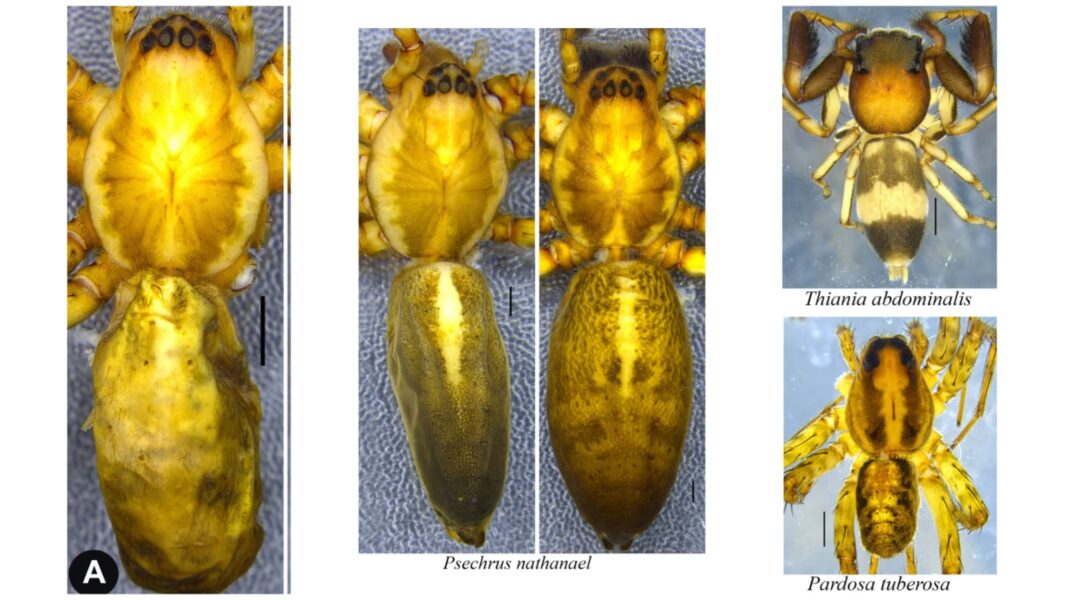Shillong, April 23: In the shadowy crevices of rocks and tree roots across Meghalaya’s misty landscapes, a silent story of discovery is unfolding.
Scientists from the Zoological Survey of India (ZSI) have recently described four species of spiders from northeastern India, and among them, two species have been recorded for the first time in India — both found in Meghalaya. This not only underscores the state’s ecological richness but also its role as a key frontier in India’s biodiversity exploration.

Of the four species, two new to science were described from Nagaland and jointly from Nagaland-Meghalaya. The new species from Nagaland is Psechrus chizami and is named after Chizami, a small village in Nagaland, from where it was found.
The new species from Meghalaya is Psechrus Nathanael, which was also found in Nagaland. The scientists say Psechrus nathanael was found on the Andersen tea estate in Meghalaya and named after Mr. Nathanael P. A. Newmai in recognition of his unwavering support during their surveys in Nagaland and Meghalaya, as well as his passion for spiders and their conservation in northeastern India.
The two new reports from Meghalaya are Thiania abdominalis and Pardosa tuberose which adds to the spider diversity in the state.

Thiania abdominalis, a medium-sized jumping spider distinguished by its creamy yellow abdomen with bold black bands, was reported from Laitkynsew in East Khasi Hills. Previously known only from China and Vietnam, this agile, web-less hunter uses its sharp vision to track and pounce on prey, playing a subtle but crucial role in natural pest control.
Meanwhile, in a lesser-disturbed corner of the Anderson Tea Estate, researchers identified Pardosa tuberosa, a wolf spider species originally described from China’s Yunnan Province. Highly sensitive to environmental changes, its presence in Meghalaya offers a vital clue to local ecosystem health. Often considered a bio-indicator, the species’ dwindling numbers can point to habitat degradation and ecological stress.

The discoveries, documented in the journals Zootaxa and Records of the Zoological Survey of India, were led by Dr. Souvik Sen, Dr. Sudhin P. P., and researcher Shouvik Mali, under the guidance of ZSI Director Dr. Dhriti Banerjee.
“This is a significant discovery not only because we found two new species and two new records, but also because it reflects the largely untapped potential for further biodiversity research in these areas,” said Dr. Sen. “Meghalaya’s forested hills hold many more secrets yet to be uncovered.”
Last year, a new spider species Phintella handersoni was described from the Anderson Tea Estate, in Ri-Bhoi district, and was named in honour of late Handerson Syiemlieh, owner of the tea estate.

The current distribution of Psechrus species in India is restricted to three major regions: Southern India, Western Himalaya, and North-East India. Southern India hosts three species: P. crepido, P. hartmanni, and P. torvus, all reported from Tamil Nadu. P. himalayanus is distributed in the Western Himalaya region, specifically in Himachal Pradesh and Uttarakhand. Three species, including the two new species, P. chizami sp. nov. (Nagaland), P. nathanael sp. nov. (Meghalaya & Nagaland), and P. inflatus (Assam), are reported from the Northeast regions of India.

“The current distribution of Psechrus species in India highlights their occurrence in diverse ecological regions, ranging from tropical forests in the south to montane and subtropical ecosystems in the northeast and Himalayan regions. However, the current knowledge on the Indian Psechrus species is still incomplete, and the genus is likely to contain more undescribed species in the country. Their true diversity in the country remains undetermined, mostly due to inadequate sampling. Therefore, extensive surveys, particularly focusing on unexplored regions of India, are essential to uncover the true diversity of Indian Psechrus species,” the scientists associated with the study emphasise.
Read: Pahalgam Terror Attack | Three terrorists identified
WATCH:
Find latest news from every corner of Northeast India at hubnetwork.in, your online source for breaking news, video coverage.
Also, Follow us on-
Twitter-twitter.com/nemediahub
Youtube channel- www.youtube.com/@NortheastMediaHub2020
Instagram- www.instagram.com/ne_media_hub
Download our app from playstore – Northeast Media Hub





